Spring is coming on. This fact recently set off a string of associations that led me to recall fondly a quilt I made in 1996.
At our place, in Harpswell, Maine, the herald of spring is something we call the “dweeb.” Whether amphibian or bird is still hotly debated in our household (Despite overwhelming evidence in my favor.—Husband), but the “dweeb” typically precedes peepers (diminutive tree frogs) by a few days to a week.
The arrival of the peepers in turn forecasts the imminent return of the farmer’s market in the neighboring town of Brunswick. Within weeks we’ll be enjoying baby arugula and spring greens, along with cut flowers, fresh eggs, and other goodies.
Daydreaming of the farmer’s market reminded me of the years we lived in Portsmouth, New Hampshire. This small New England town hosted a farmer’s market in the parking lot of a local bank. I often stopped there as I walked to work at Portsmouth Fabric Company.
You know I love color. Well, there’s plenty to be found at a farmer’s market—fruits, vegetables, flowers, yarn and knitwear, t-shirts—so much that it finally dawned on me that I ought to make a quilt.
For the next couple of summers I took photographs. Eventually I focused in on four particular vendors—ones that I thought had both vivid wares and vivid personalities.
I was drawn to the vegetables of Cricket (Masako) Buck.
Her stacks of carrots, bundles of leeks, crates of tomatoes, winter squash, and of course, she herself made it into the final composition. Here I’m in between styles. More realistic in color than my later quilts, still you can see me stretching a bit with the patterns in the face and in the veggies. I was especially pleased with the leeks: they almost seem to be translucent.
An equally interesting character was Charlie Reed selling his “farm fresh” eggs. He always brought along chickens and doves in pens which made for a very attractive stand.
Charlie always wore those big big sunglasses and straw hat. I love his freckled forearms, which I accentuated, and his big bushy mustache. Look at the wrinkles in the corners of his eyes. You can tell he’s a guy who smiles a lot.
When it comes to color, nothing is more saturated than flowers. Laura Tangerini had buckets and buckets full, depending on the season—lilacs and daffodils in spring, then lilies and sunflowers, all the way to mums in the fall.
In fact, flowers are so full of color that some folks have asked me why I don’t make more quilts with flowers in them. As beautiful as they are, constructing flowers is, there’s no other word for it, tedious. Cutting each petal, each so much like the last, is more than I can manage. Despite my aversion, I like how these flowers came out. The zinnias and sunflowers seem to have form with highlights and shadows. The bouquet at the top is a bit more impressionistic.
One of the most memorable characters in the Portsmouth market was Jerry Burchell, the apple guy. Jerry had his sales pitch down. He specialized in forgotten and unusual varieties of apples. As you approached his stall, he would hold out a handful of heirloom apples and ask, “Have you ever tried a Maidenblush? How about a Cornish Gilliflower? No? Here, try a slice.” Then quick as wink he’d use his slicer-corer to dissect a sample. Who can turn down a slice of fresh apple? Who can walk away without buying a peck?
I hope Jerry won’t mind that I took liberty with the apples in my quilt. I mixed them up pretty good, both to provide interest and to represent the variety he offered. Giving a round figure shape is a good exercise for artists. The other challenge in this piece was the foreshortening of his fingers.
I matted and framed these pieces under glass. Notice that each one “breaks” the border in some way. The leeks, the poultry tails, the sunflowers, and the apples all extend beyond the wavy-cut edge. They aren’t really individual pieces in my mind, they were always meant to hang together.
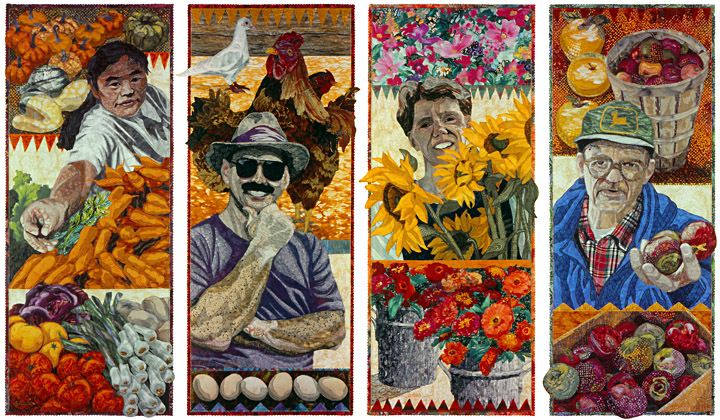
Eventually, the set sold to the Portland (Maine) Indoor Farmer’s Market. It seemed like the perfect venue for it. Besides the obvious subject matter, the pieces would be visible to the public every day, rather than hidden away in a private home.
Then I heard that the Portland Indoor Farmer’s Market had closed down.
What happened to the quilts? I wondered. I called the only contact I had but they couldn’t help. The pieces had disappeared forever.
Or so I thought.
Years later, we were cross country skiing at Pineland Farms. How to describe Pineland Farms? I’ll let their website do the talking:
Located in the rolling hills of New Gloucester, Maine, PINELAND FARMS is a 5,000-acre working farm, diverse business campus and educational and recreational venue that welcomes visitors to enjoy its beautiful rural landscape.
Son Sam, husband Tom, and I were taking a break in the cafeteria. There in this open space on the far wall, were four familiar framed pieces. Sure enough, it was them.
It was like seeing old friends. I felt pleased that they had found another appropriate (and hopefully permanent) home, though they looked a little isolated on that large wall. It’s now been a few more years since I saw them, I’ll have to check if they’re still there.
There’s a definite thrill when a quilt sells, but it also comes with a tug of regret. My quilts are a part of me, we have a history together. Regardless of where they end up or who purchases them, they remain “my” quilts. When they go out into the world they take a piece of me with them. Rather like children, I expect them to leave home sometime, they need to find where they belong. I just want them to stay safe and end up in a good place.
Next Week: My experience taping two episodes for Quilting Arts Television with Susan Brubaker Knapp in Solon just outside Cleveland, OH.



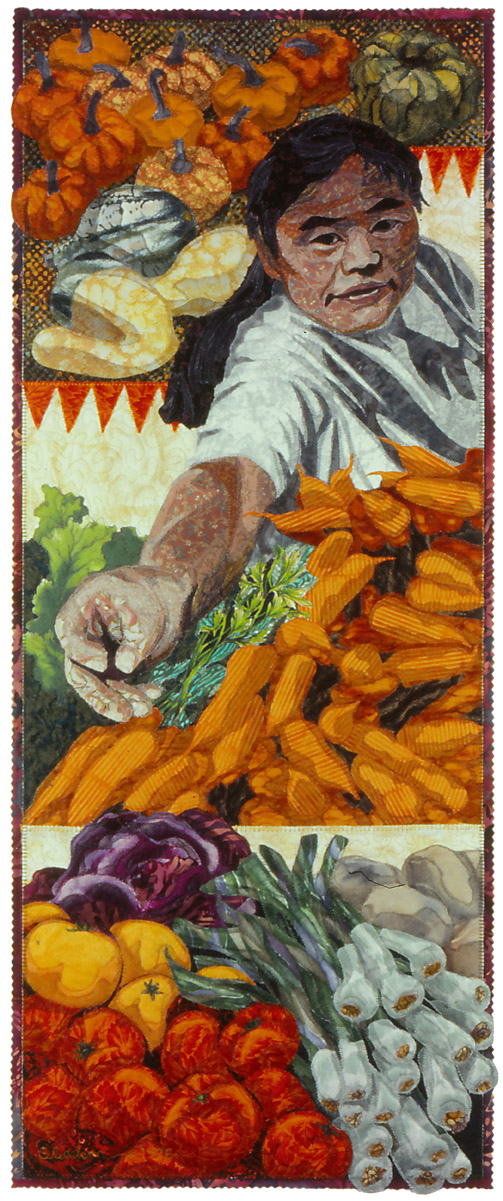



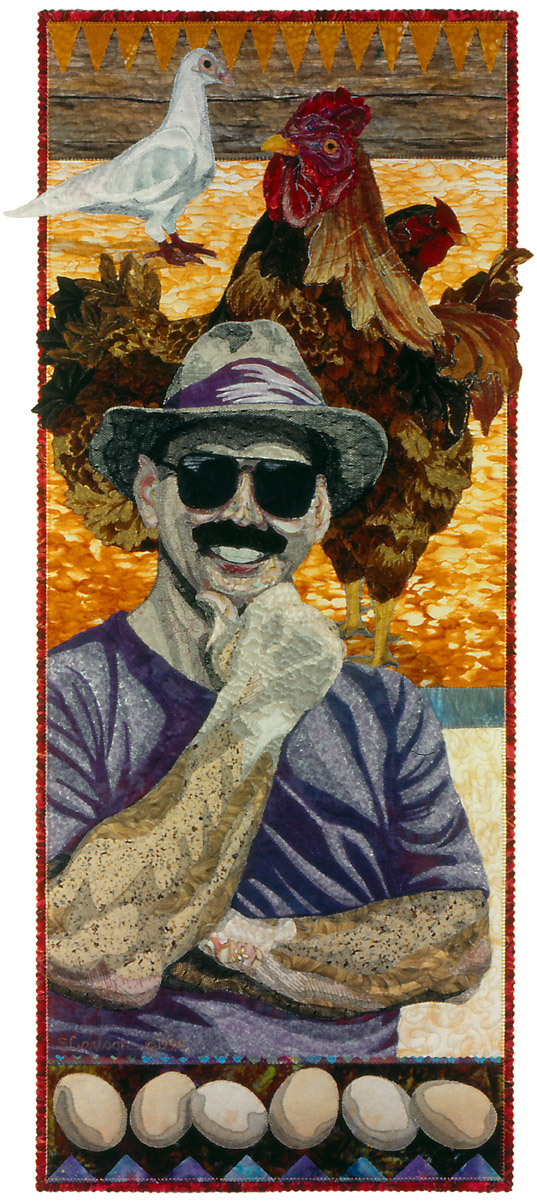



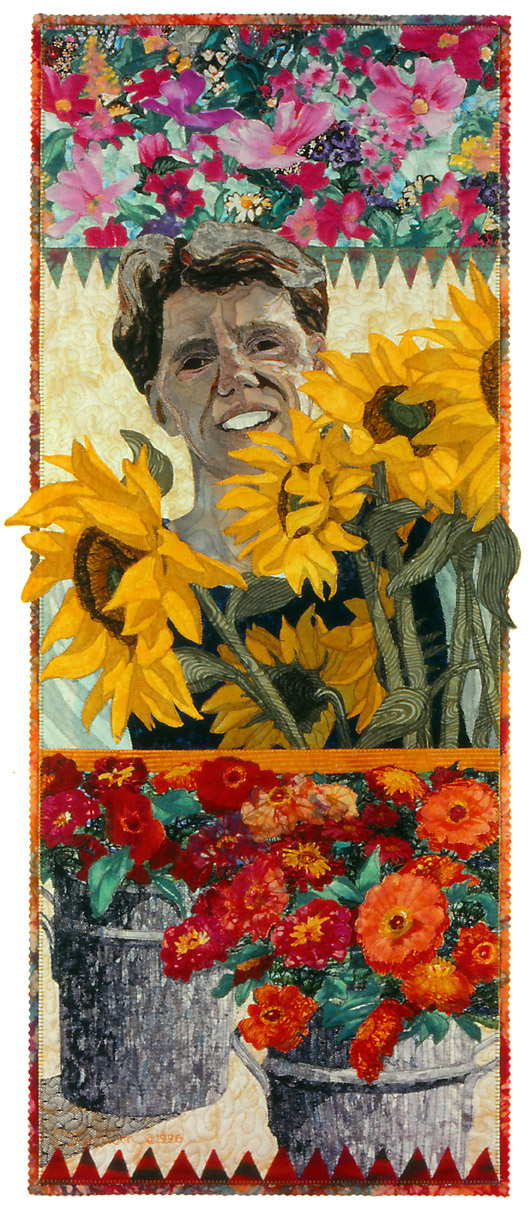



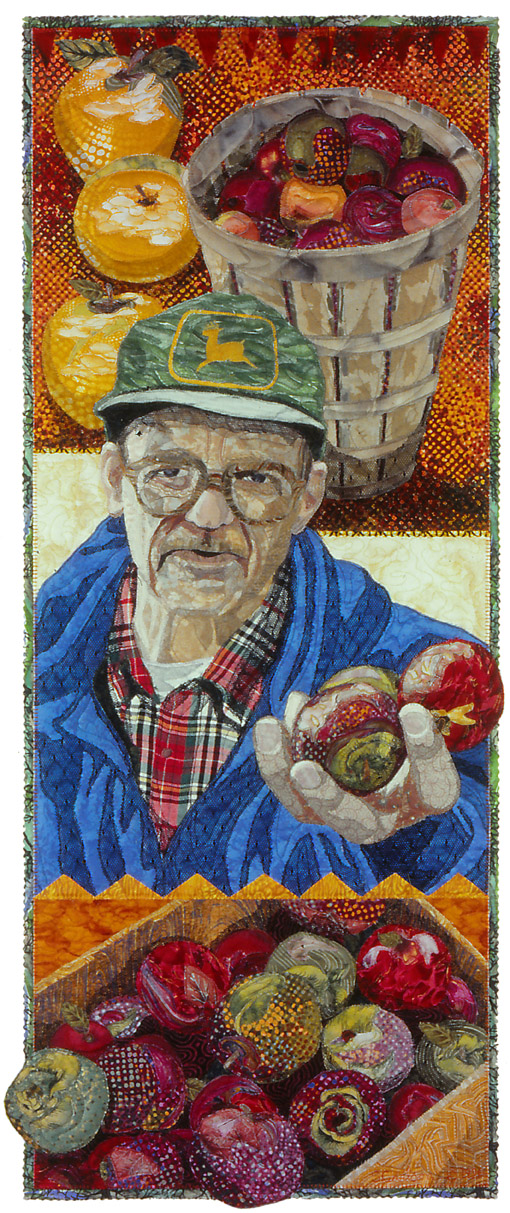

I love Maine, but Portsmouth is my favorite town in NE. Love those little red tug boats. My uncle worked for 30 years as an electrician in the Portsmouth Naval yard and then of course there is Moe’s. Love your work and this is no exception.
How ‘serendipitous’ that you came across those quilts many years later in an entirely different place. What a wonderful story! And such beautiful quilts too!
Like Elaine–I love your work, and look forward each week to your blogs.